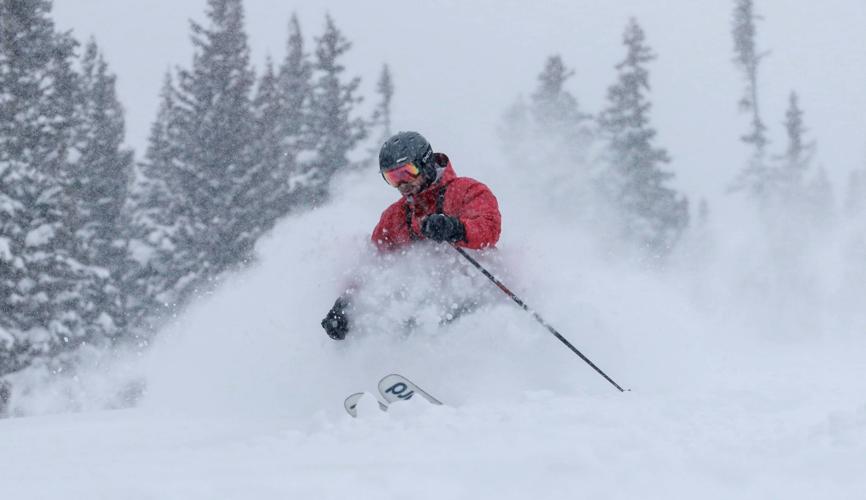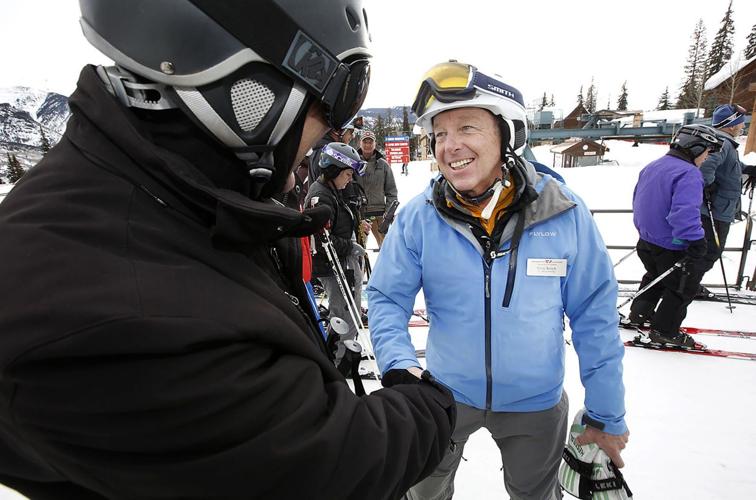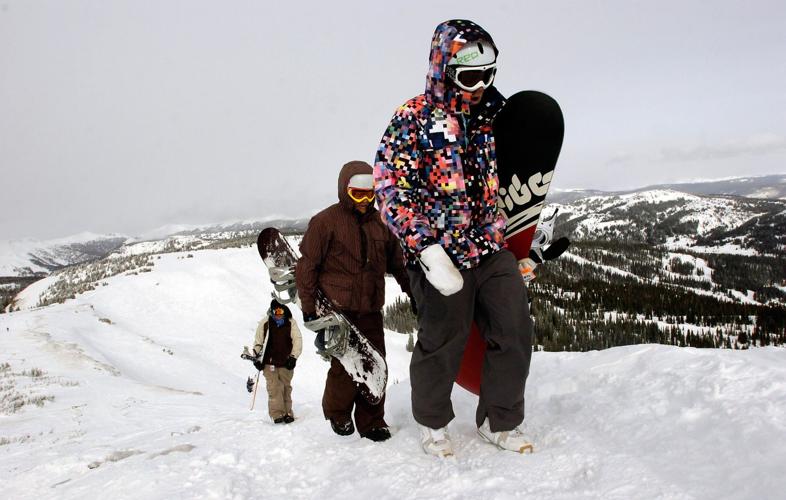Powder to the People: The ski bums’ last stand | Vince Bzdek
I see signs everywhere this season. It’s either a ski bum uprising or the last gasp of a dying boho lifestyle. Probably both at the same time.
For the first time in decades, ski patrollers went on strike this winter. The walkout in January at Utah’s Park City Mountain, owned by Vail Resorts, lasted nearly two weeks, shutting down two-thirds of the mountain. Turns out, ski bums are sick and tired of not being able to make ends meet in resort towns with $25 hamburgers and $750,000 one-bedroom condos.
Crested Butte lift maintenance workers also threatened to strike recently and Keystone ski patrollers are now renegotiating their contract with Vail Resorts.
In another sign of a ski bum revolt, throwback ski areas like Wolf Creek and Purgatory are surging in popularity as Vail Resorts and other ski factories struggle with longer lift lines, parking and labor issues, reporter David O. Williams wrote in these pages last week. Vail and other areas recently announced a daily ski lift ticket price of more than $300 for the first time ever.
Locals are also rising up to try to take back whole ski areas from big ski conglomerates to preserve their ski bum souls.
The small town of Nederland is negotiating with Powdr to buy nearby Eldora Mountain.
“The whole locally owned ski area thing has really hit a nerve. This is Nederland living up to its legacy, from the miners to the hippies to the music scene,” Nederland Town Administrator Jon Cain told the Colorado Sun.
Nederland’s inspirations are the town of Steamboat Springs, which owns Howelsen Hill, and a cooperative that owns Mad River Glen in Vermont.
Powdr recently sold Killington, in Vermont, to a Boston-based group for an undisclosed amount.
A group of Oregon locals formed Mount Bachelor Community Inc. (motto: Powder to the People) to begin a quixotic quest to raise about $200 million and buy Mount Bachelor from corporate titans, according to a recent article in The New York Times.
“In a globalized, corporate, shifting world that can feel unkind to consumers, the fight for Mount Bachelor is about the desire to capture something cherished and put it back in the hands of the people who love it most,” wrote John Branch. “It’s about regaining control of something before it becomes unrecognizable. It’s about the fraying strands of local connections, the fear of regret and the unease over the future.”
It’s also, I’d argue, about nostalgia.
For those of us who grew up buying $35 lift tickets at King Soopers, taking a couple of cold runs down Ski Broadmoor at night after class, bumming a ride over Loveland Pass before the tunnel was built, or jumping on the Winter Park Ski Train for $5 just for the chance to make a few turns in fresh powder, skiing has lost a kind of rebel purity.
Way back after World War II, the skiing soldiers of the 10th Mountain Division returned to the U.S. obsessed with schussing. They established 62 ski schools and started some of the biggest ski areas in the county, such as Vail, democratizing skiing so that it was suddenly accessible to the middle classes.
They also invented the American ski bum.
“After Italy, a lot of them said, ‘F— it, I’m going to take a job that I like,’” historian Annie Coleman told author Heather Hansman. “It’s like after 9/11, when bankers were moving away from Manhattan.”
“Their dream grew out of a ‘40s postwar counterculture that rejected stability, and it dovetailed with a growth in national prosperity,” Hansman wrote in “Powder Days.” All those new ski areas needed workers who would do menial labor in exchange for a ski pass, and those workers became a whole generation of early ski bums.
Life magazine did a ski bum story in 1950 as skiing became a way to rebel against the straight-laced conformity of the ‘50s. Skiing was suddenly like surfing: young, popular and cool.
Secret societies of the best skiers in the world formed up, like the Air Force in Jackson Hole or The Dogs of Bell in Aspen. As resorts multiplied and got fancy, the legend of the dirtbag skier became even more popular, a kind of antihero in the ’70s, Robin Hoods on snow.
The carefree “soul skier” living close to the earth became a kind of a stereotype eventually. Ski bums were the freedom-loving responsibility-shirking Lost Boys in Neverland, who refused to grow up, says Hansman.
But ski towns are so expensive now, and skiing such a luxury sport, the math just doesn’t work anymore for resort workers willing to work for any wage as long as it involves skiing.
The “mythology of the ski bum” is all but dead, Breckenridge ski patroller Ryan Dineen told Williams.
“That’s a story we all kind of love to tell ourselves, and it’s kind of this spirit of skiing that we wanted to keep alive as long as possible, but let’s make no mistakes: Skiing brings hundreds of millions of dollars to the state of Colorado,” Dineen said. “This industry makes money for not just the investors, not just the towns around us, but the entire state and region, and to ignore that and pretend that we should be paid in powder is economically ignorant.”
If we truly want to save the ski bum, we have to change the idea of what the ski bum is, Hansman believes. The original idea of ski bumming was a kind of anti-citizenship, checking out from society.
Ski bums can’t do that anymore. They have to show up. They have to volunteer for the food banks, show up for town council meetings deciding the future of their paradises, help build affordable houses, write the letters to the editor.
To be a true ski bum today, all those Peter Pans will have to finally grow up.
Or not. Some of them will probably strike out for new, untouched horizons instead.
For instance, the phenomenon of uphill skiing — “earning your turns” — to beat the high price of chairlifts and gondolas is on the rise as ski areas grow ever more glitzy. Ski areas allowing uphill routes and hours where people skin up and ski down have increased by nearly a third over the past decade, according to statistics from the National Ski Areas Association.
I myself bought some backcountry skis and skins this year, and now I mostly ski in untracked places like Mayflower Gulch rather than commercial ski resorts. I always liked the discovery aspect of skiing most anyway, seeking out a brand-new hill or run, never doing the same slope twice. Now I’m back out in places I maybe shouldn’t always go, skittering down a gully through a grand avenue of evergreens with no one in sight, reconnecting with echoes and memories of something simple and wild, back in a place that used to be mine.







